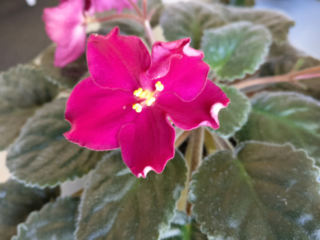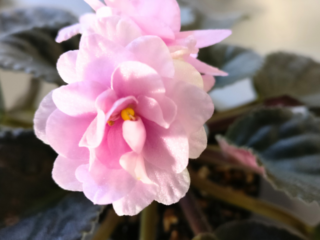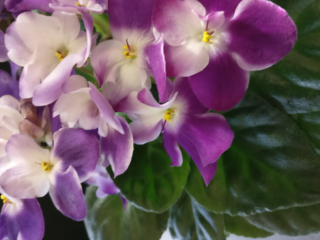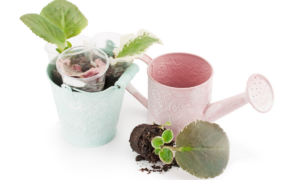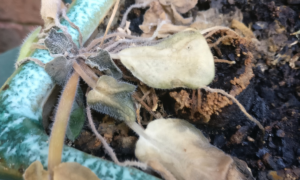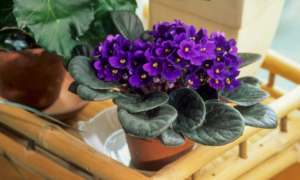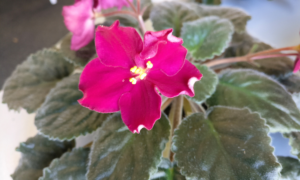What is the best time to buy African violets? These popular houseplants, known for their beautiful blooms and fuzzy leaves, are a favorite among gardeners. To ensure you get the best African violets for your home, this article will provide information on when to purchase them, what types are available, and where to find quality specimens.
Throughout this article, we’ll discuss various types of African violets available in the market and when they typically bloom. Additionally, we will delve into where to find high-quality specimens and offer guidance on choosing healthy plants that will thrive in your home environment.
Finally, our comprehensive guide includes essential care tips such as fertilizing African violets properly, maintaining adequate light levels using grow lights if necessary, managing flower buds formation without damaging plant’s leaves or roots system. So let’s dive in together and discover what is the best time to buy African violets!
Table Of Contents:
- When to Buy African Violets
- Where to Buy African Violets
- How to Choose the Best African Violets for Your Home or Garden
- Care Tips for Your African Violets
- FAQs in Relation to What is the Best Time to Buy African Violets?
- Conclusion
When to Buy African Violets
Want to add some color to your home with African violets? The best time to buy these beauties is during their peak growing season in spring and summer. This is when they’re healthiest and most vibrant, making it easier for them to adapt to your home environment.

Why Spring and Summer?
- Better Selection: Nurseries stock up on African violets during the warmer months, so you’ll have a better chance of finding the perfect plant with just the right color combination or leaf type.
- Faster Growth: With longer daylight hours and warmer temperatures, African violets grow faster in spring and summer. Buying them during this time allows you to enjoy their beauty sooner.
- Easier Acclimation: Since conditions are generally more favorable for growth during these seasons, newly purchased plants will acclimate quicker when brought indoors from a nursery or store setting.
Tips for Buying Off-Season
If you’re looking to purchase African violets outside of the spring and summer seasons, there are still options available with some extra effort. It’s still possible but may require some extra care on your part. Here are some tips:
- Purchase from reputable sellers who provide information about how they’ve cared for the plants during the off-season.
- Be prepared to provide extra care, such as additional humidity or temperature control, when bringing your new African violet home during colder months.
- Consider buying younger plants or those not yet in bloom – they may be more adaptable and have an easier time adjusting to their new environment.
While spring and summer are the ideal times for purchasing African violets due to better selection and optimal growing conditions, it’s still possible to buy these beautiful houseplants year-round with some added attention. Just remember that providing proper care is essential regardless of when you purchase your African violet – so don’t hesitate to explore our other articles on how best to nurture these stunning blooms.
The best time to buy African violets is during their peak growing season in spring and summer when they’re healthiest and most vibrant. Buying them during this time allows for better selection, faster growth, and easier acclimation. If buying off-season, purchase from reputable sellers who provide information about how they’ve cared for the plants or consider buying younger plants or those not yet in bloom that may be more adaptable.
Where to Buy African Violets
Ready to add some beauty to your home or garden with African violets? Here are some great places to buy them:
Local Nurseries and Garden Centers
Get expert advice and inspect the plants in person by visiting your local nursery or garden center. Find one near you here.
Online Stores
Shop for a wider variety of African violet species and cultivars at online stores like The Violet Barn, Lyndon Lyon Greenhouses, and Bluebird Greenhouse. Remember to read customer reviews, check shipping policies, and review return policies before making a purchase.
Social Media Groups and Forums
Connect with African violet enthusiasts on social media platforms like Facebook groups such as African Violet Exchange or online forums like the African Violet Forum. You can find unique cultivars and purchase directly from fellow hobbyists.
Discover the ideal African violets to decorate your space or outdoor area with through social media platforms such as Facebook groups like African Violet Exchange and online discussion forums like the African Violet Forum. Happy shopping.
How to Choose the Best African Violets for Your Home or Garden
Choosing the perfect African violet can be a daunting task, but fear not. With these tips, you’ll be able to select a plant that will thrive in its new environment.

Healthy Foliage
When selecting an African violet, look for plants with firm, dark green leaves. Avoid any with yellowing or wilting leaves, or brown spots that may indicate a fungal infection or other issues. Nobody has the time for that.
Strong Root System
A strong root system is crucial for the overall health of your African violet plant. Gently lift the pot to check for visible roots coming out from drainage holes at the bottom. If you see them, you’re golden.
Vibrant Flowers
The flowers of an African violet should be vibrant and colorful without any signs of fading or discoloration due to age or disease. Avoid plants with wilted flowers, as they may not have been properly cared for before purchase. Nobody wants a sad plant.
Size and Variety
Consider what size and variety of African violets would best suit your needs. Whether it’s standard-sized varieties like Saintpaulia ionantha, miniature types such as Saintpaulia pusilla, or trailing varieties like Saintpaulia pendula, each type has its own unique characteristics and care requirements. Select the African violet variety that is best suited to your available space and skill level.
Pest-Free Plants
Inspect the plant carefully for any signs of pests such as aphids, spider mites, or mealybugs. These insects can cause significant damage to African violets if left untreated. If you spot any pests on a plant at a nursery or store, it’s best to avoid purchasing that particular specimen. Ain’t nobody got time for pests either.
Local Nursery vs Online Store
When deciding where to buy your African violet plants from, consider whether you prefer visiting a local nursery in person or ordering online. Shopping locally allows you to inspect plants firsthand before buying them, while ordering online provides access to a wider variety of species and cultivars not available at local nurseries. The choice is yours.
When buying African violets, choose plants with healthy foliage and strong root systems. Look for vibrant flowers without any signs of fading or discoloration due to age or disease. Consider the size and variety that best suits your needs, whether it’s standard-sized varieties like Saintpaulia ionantha or miniature types such as Saintpaulia pusilla.
Care Tips for Your African Violets
Want your African violets to thrive? Follow these tips:
Provide Bright Indirect Light
African violets love bright indirect light, but direct sunlight is a no-no. It’ll scorch their leaves and make them yellow. So, place them near a window with filtered sunlight or under fluorescent lights.
Keep the Soil Moist but Not Soggy
Don’t drown your African violets. Keep their soil moist, but not soggy. Overwatering can lead to root rot, while underwatering can cause wilting. Water them from the bottom by placing them in a tray filled with water for about 30 minutes before draining any excess liquid.
Maintain Proper Humidity Levels
African violets need humidity to stay happy and healthy. Aim for a humidity level between 40% – 60%. You can use a humidifier or place them on top of a tray filled with pebbles and water (just make sure the pot doesn’t sit directly in the water).
Fertilize Regularly
- Use an African violet-specific fertilizer with a balanced ratio of nitrogen, phosphorus, and potassium to promote blooming.
- Fertilize every 4-6 weeks during the warmer months and cut back to once in 8-10 week intervals during cooler seasons.
Prune Regularly
Prune your African violets regularly to encourage bushy growth and more blooms. Remove any dead or yellowing leaves as well as spent flowers. This will help prevent diseases from spreading throughout the plant.
Repot When Necessary
Repot your African violets every year or two when they outgrow their current pot or if you notice a decline in health. Choose a slightly larger pot with drainage holes, use fresh soil specifically designed for African violets, and gently transfer your plant into its new home.
.png)
By following these care tips, your African violets will be the envy of all your plant-loving friends.
To keep your African violets healthy, provide them with bright indirect light, maintain proper humidity levels between 40% – 60%, fertilize regularly during their active growing season and prune them to encourage bushy growth. Repot the plants every year or two when they outgrow their current pot or show signs of decline in health.
FAQs in Relation to What is the Best Time to Buy African Violets?
Are African violets hard to find?
African violets are not hard to find, but availability may vary depending on where you live and the time of year. Check out online retailers like Optimara or Violet Barn for a wide selection.
Where should I put my African violet?
Put your African violet near a window with bright, indirect light, but avoid direct sunlight as it can scorch the leaves. East-facing windows are often perfect because they provide morning sun and afternoon shade.
What direction should African violets face?
African violets should face eastward to get ample morning sunlight while avoiding harsh afternoon rays that could damage their delicate foliage.
When do African violets bloom?
African violets can bloom throughout the year with proper care, but they typically have peak blooming periods in spring and fall when temperatures are moderate and daylight hours gradually change.
Conclusion
Ready to add some color to your home? Buy African violets during their blooming season for the best selection and quality.
Choose plants with healthy foliage and blooms that are not too old or young, and keep them in a warm, humid environment with bright but indirect light.
You can find African violets at your local garden center, online retailers, or specialty growers.
With proper care, these beautiful flowers will brighten up your space year-round.

